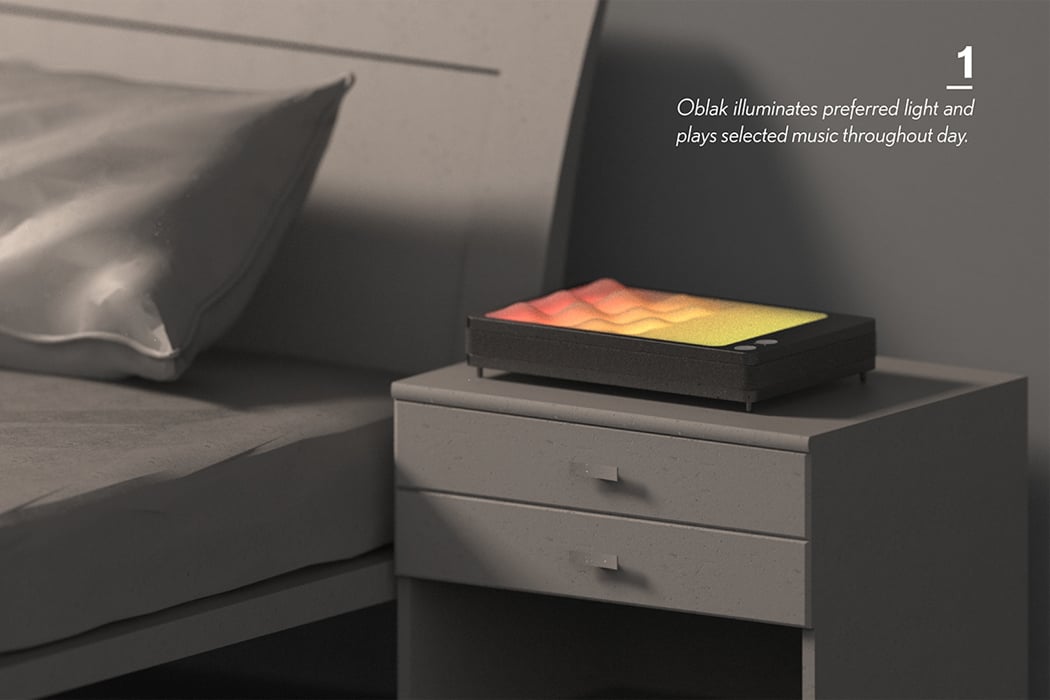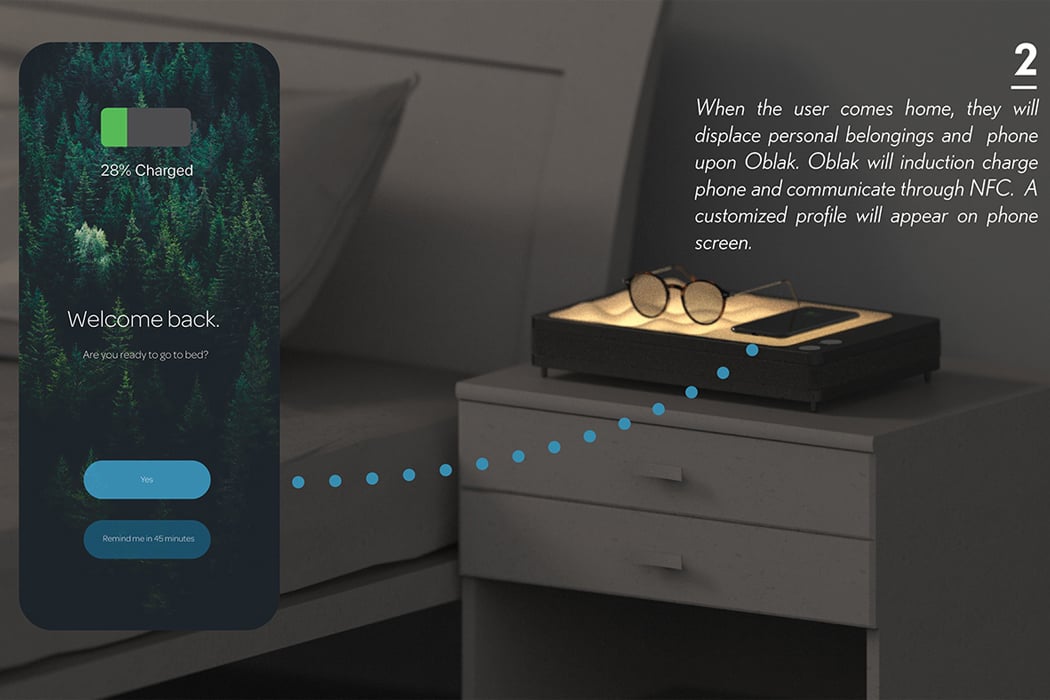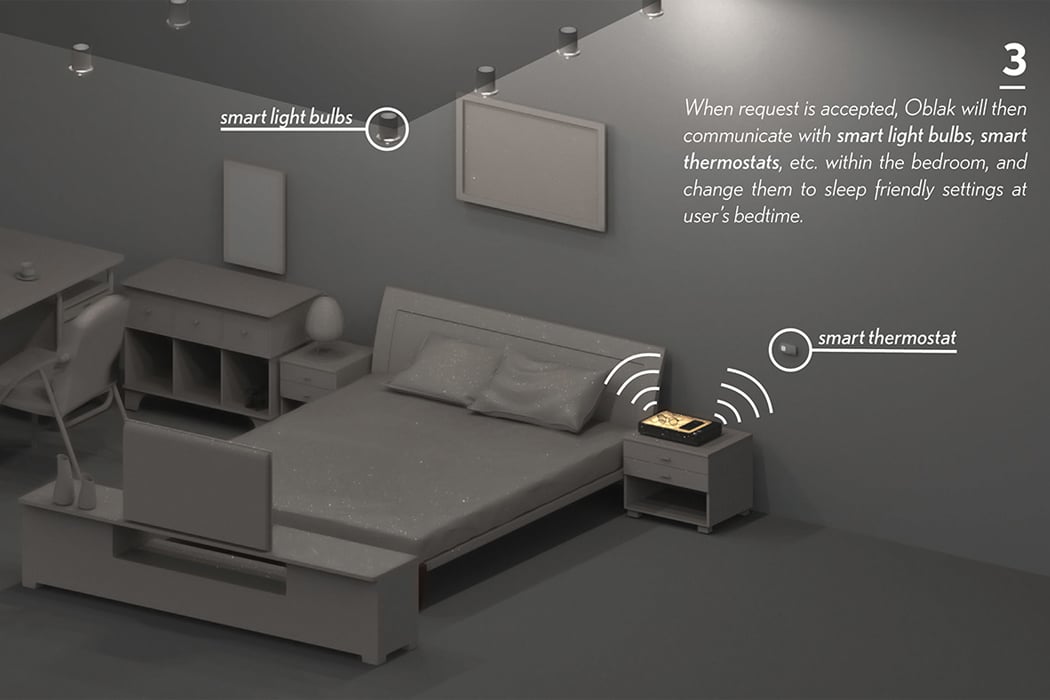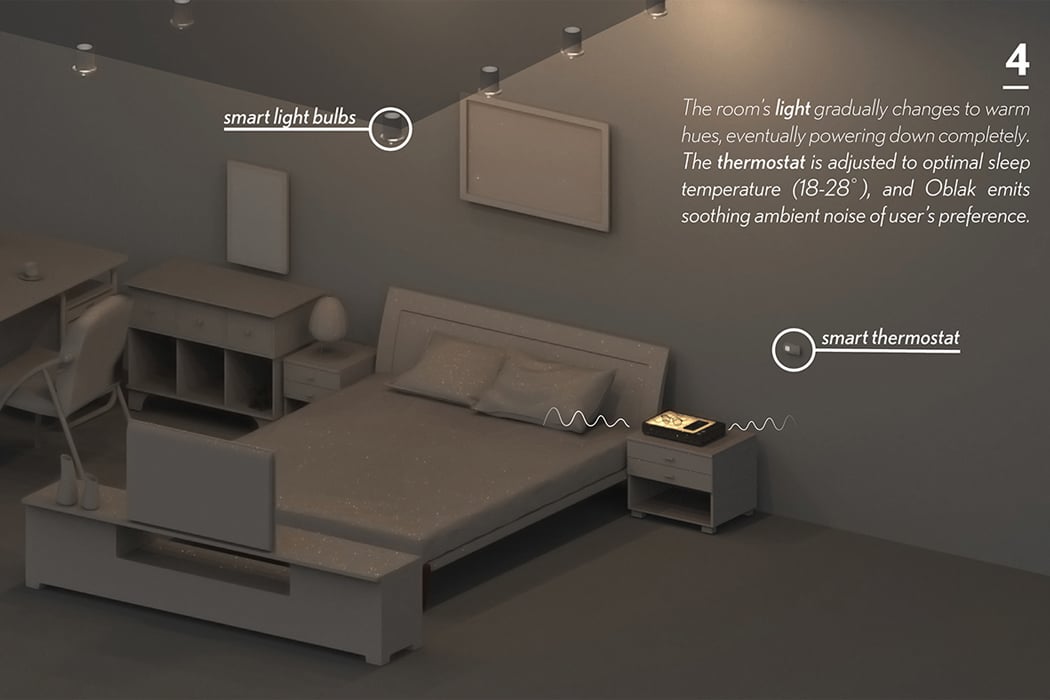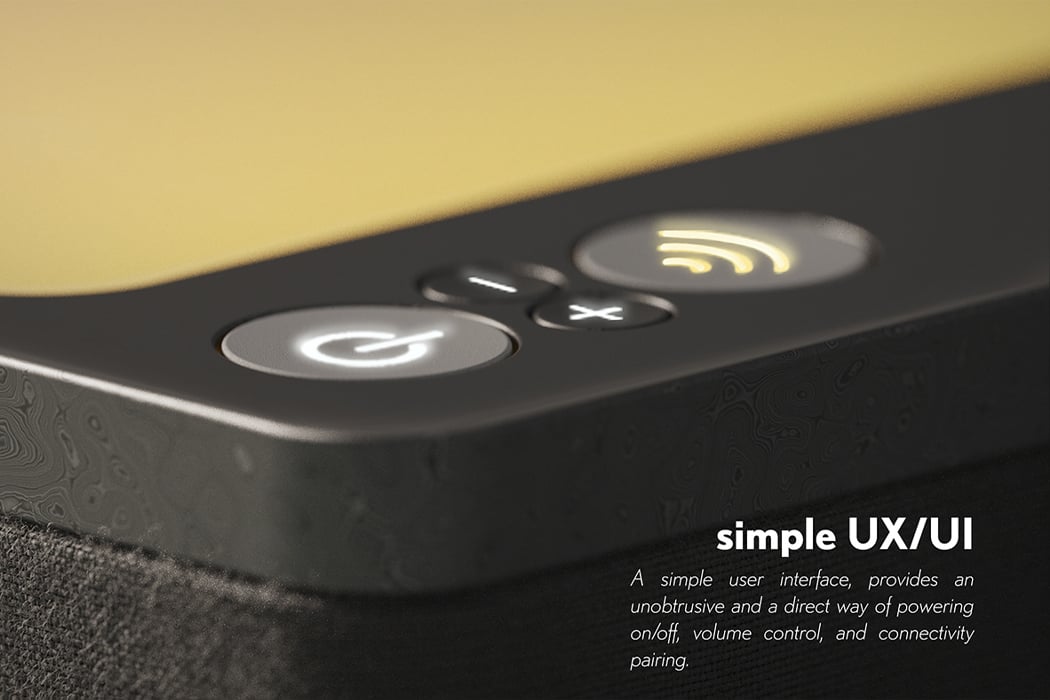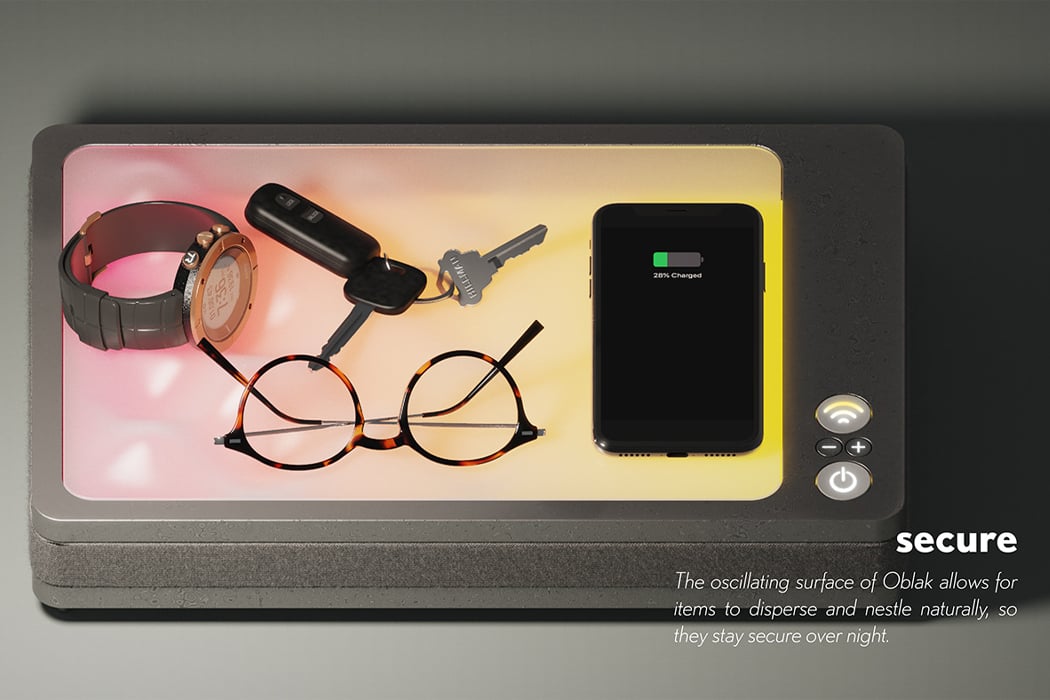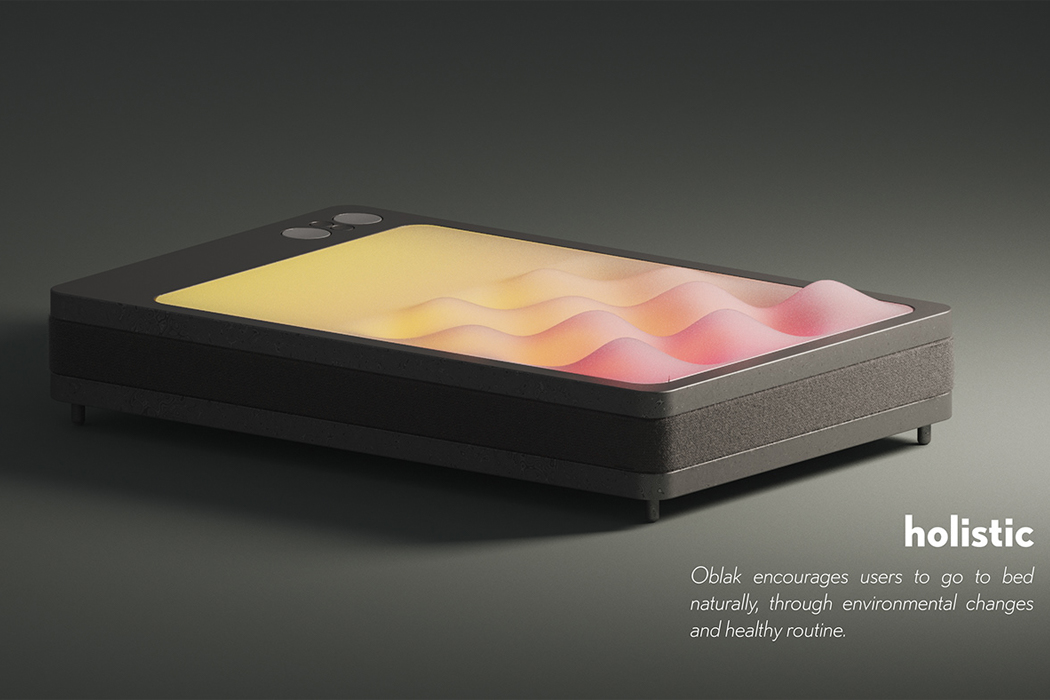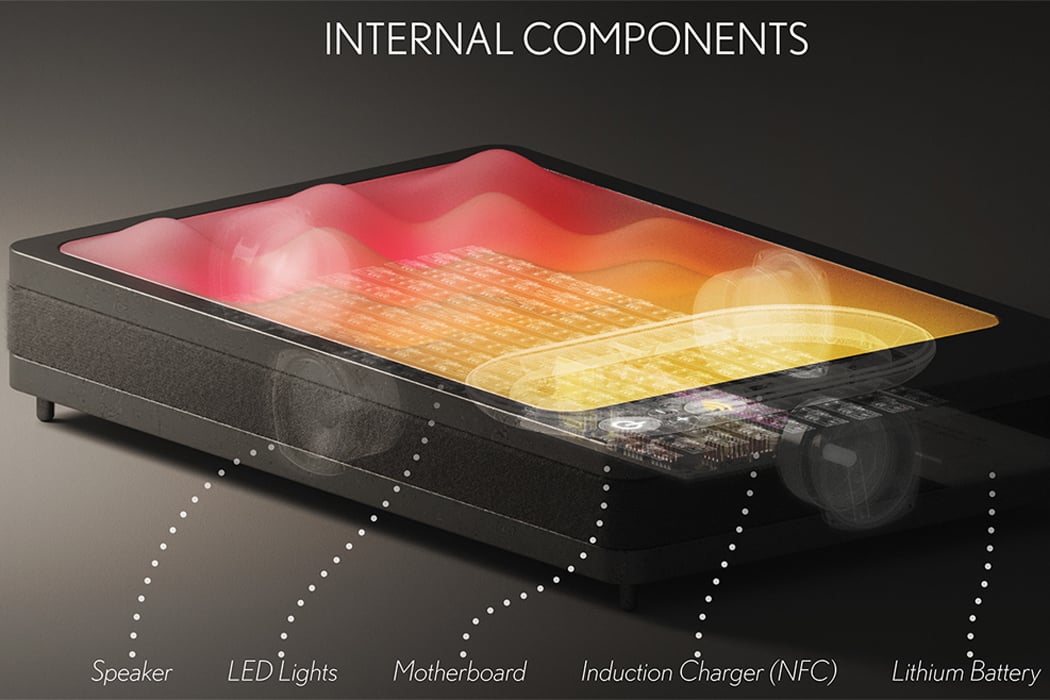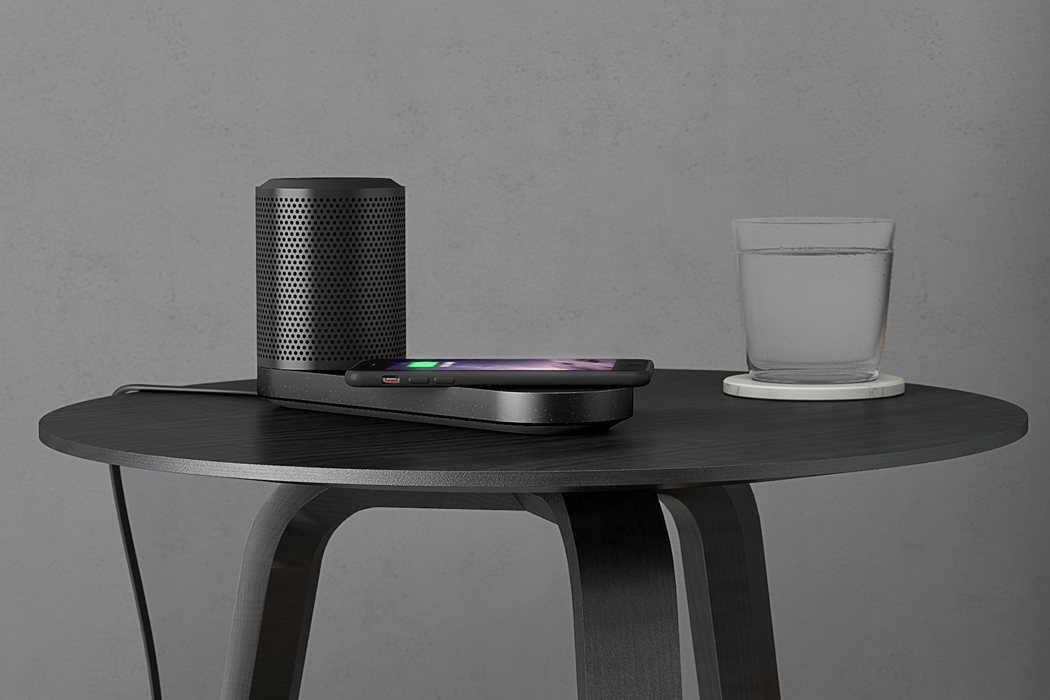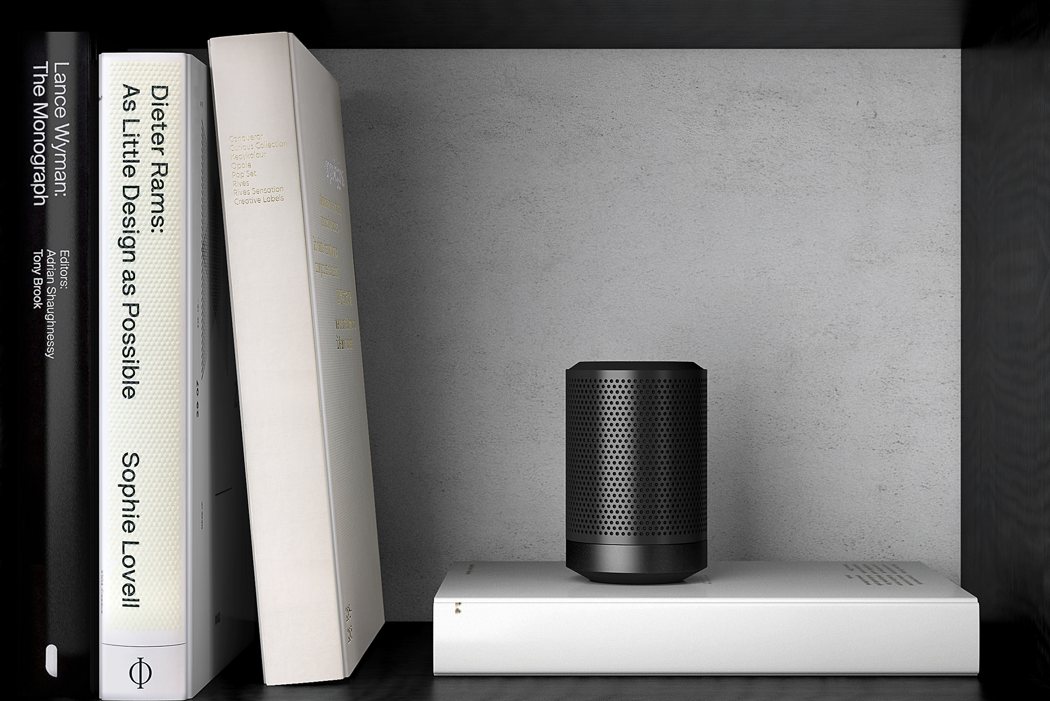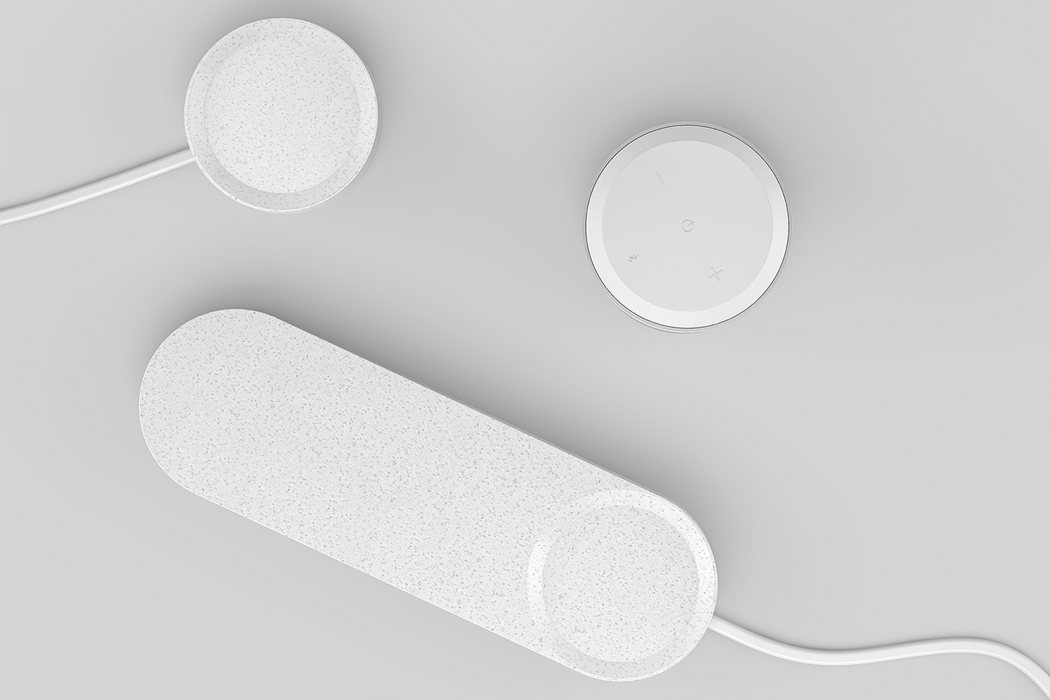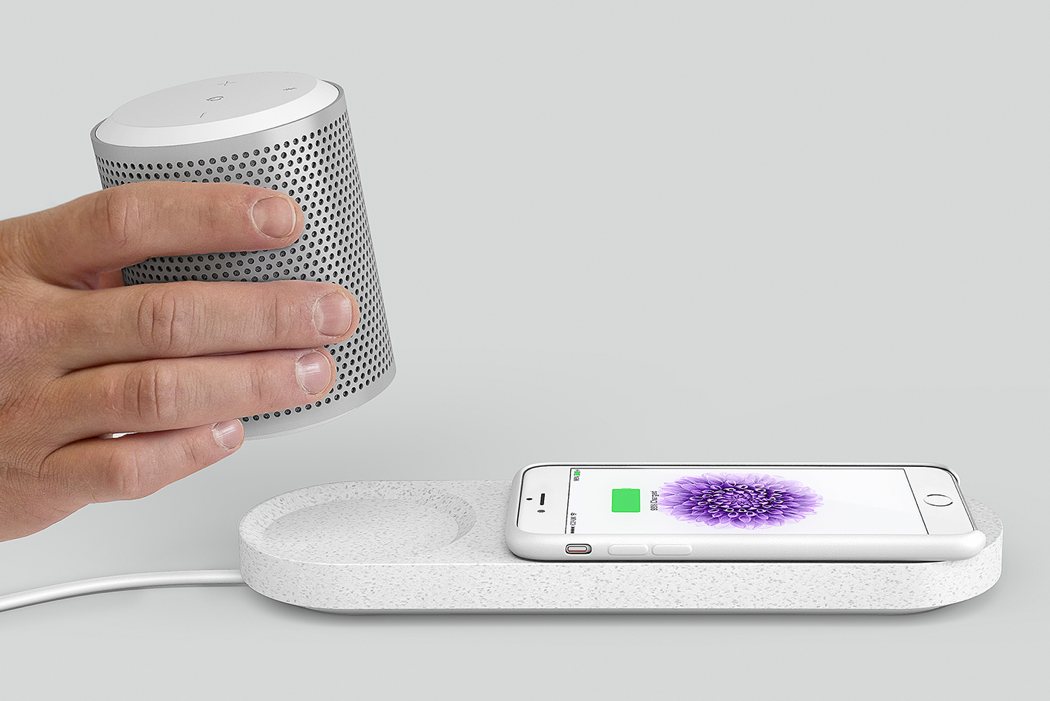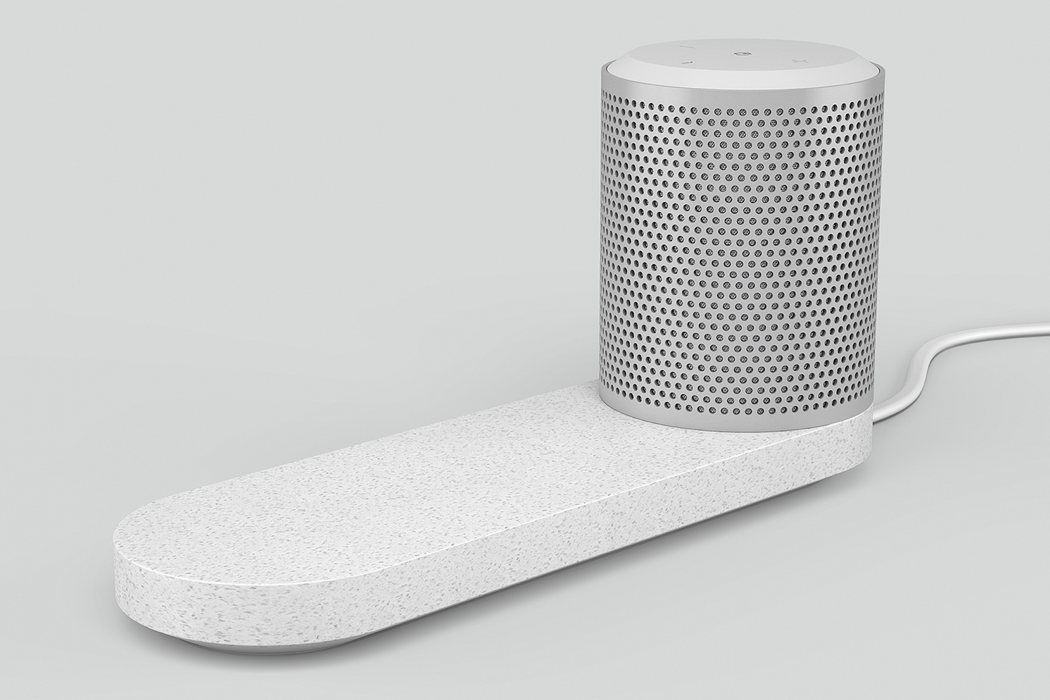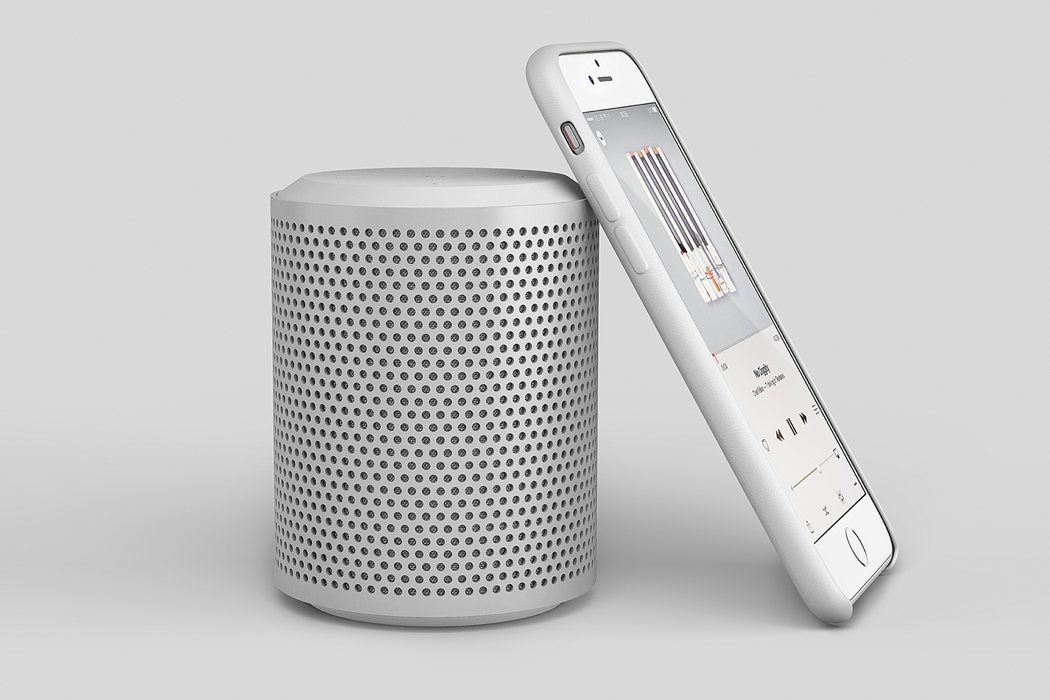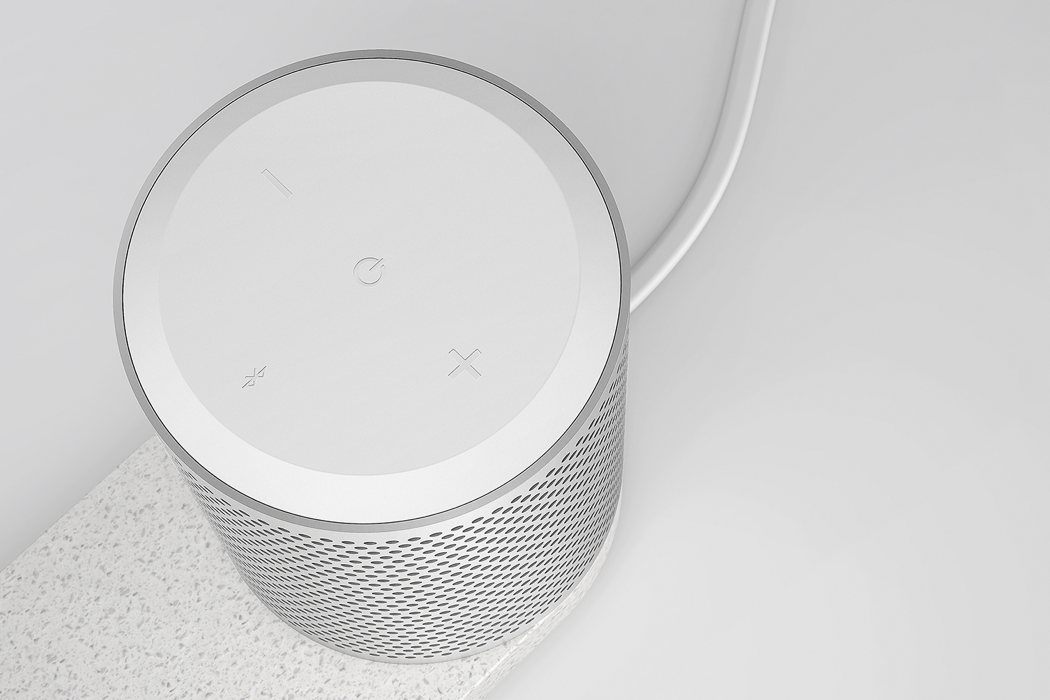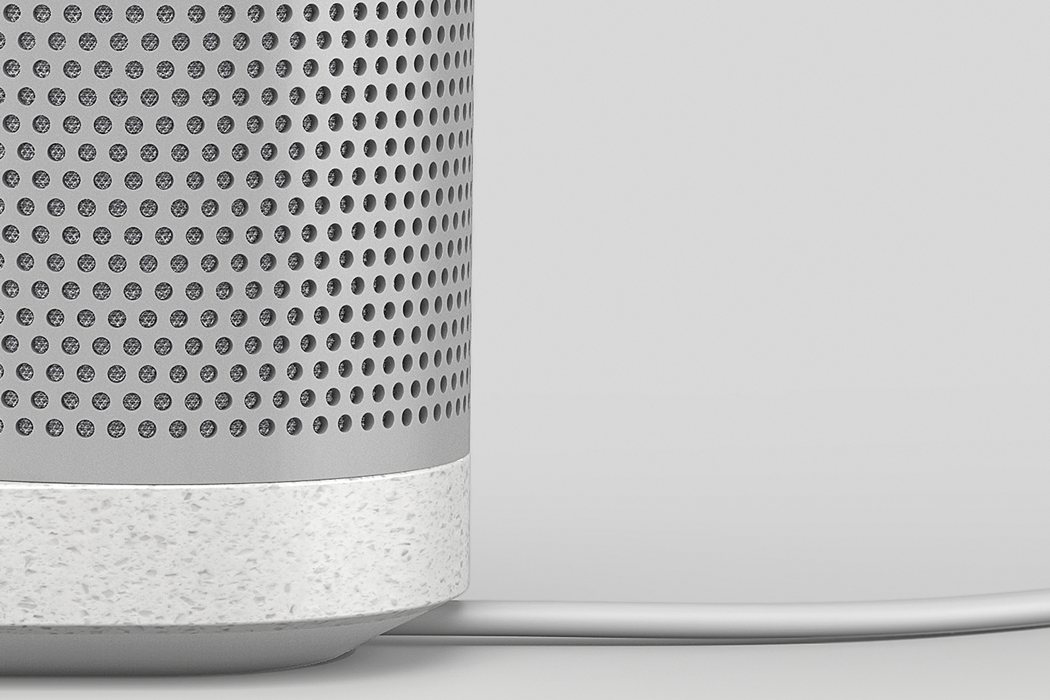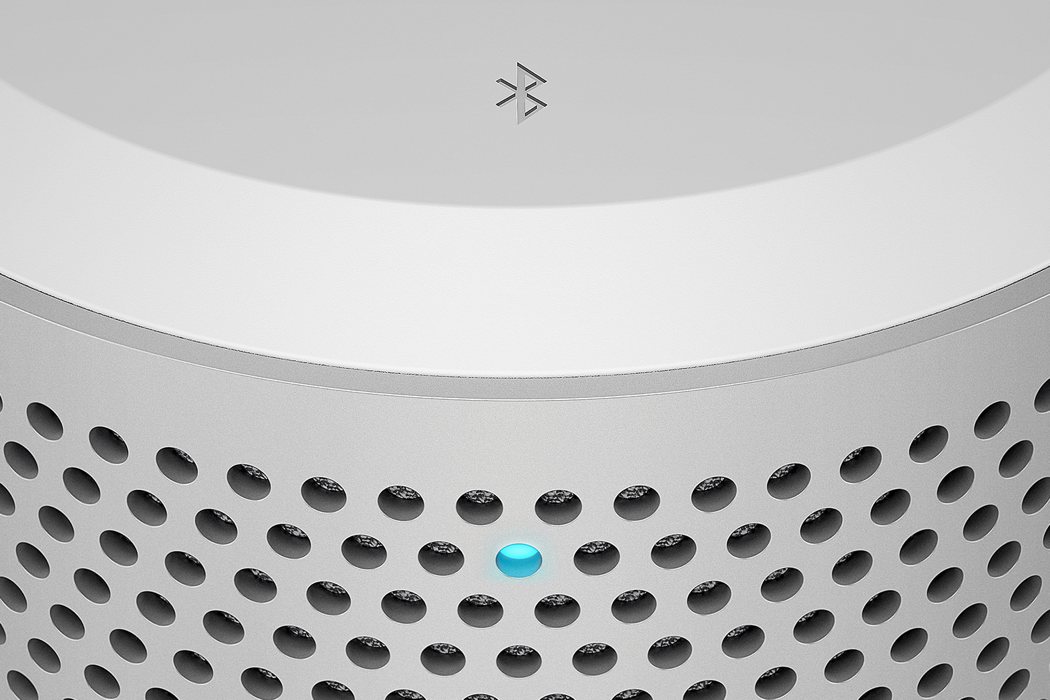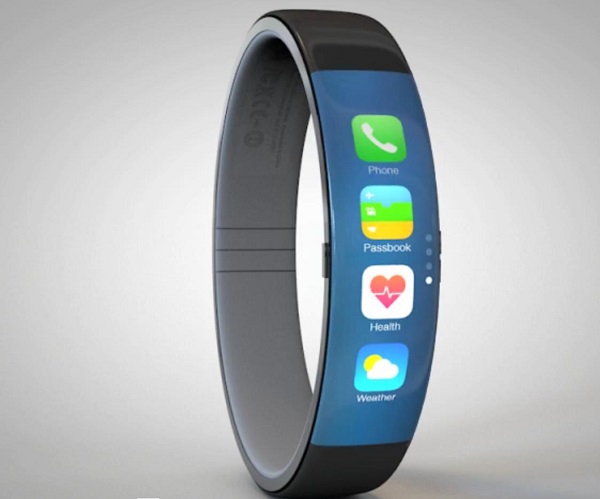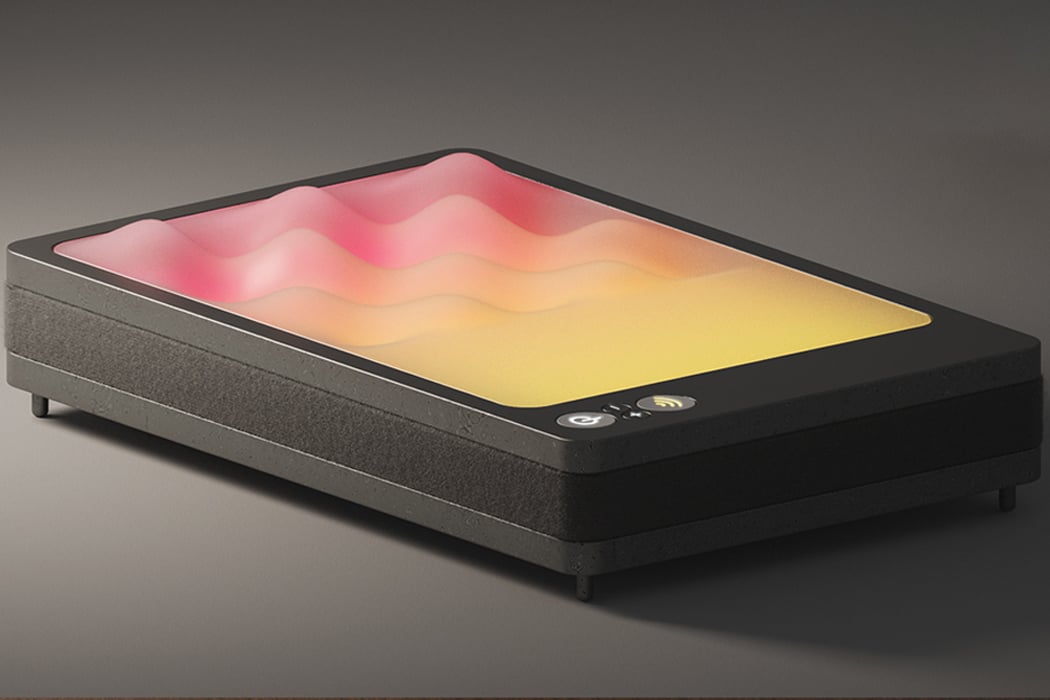
Sleep is personal. Each night, we curate the best conditions for optimal sleep. You might have a preferred meditation app, a favorite essential oil for your trusted aromatherapy diffuser, or the only sleep apnea breathing mask that won’t make you feel like you’re going into combat come morning. Whatever your ideal sleeping conditions call for, we all know how important it is to set the tone for a good night’s rest. Mark Stanisic recently debuted his design, Oblak in order to provide a sleeping bedside device that helps manage nightly routines and promote effective rest.
Oblak is essentially a smart speaker that walks users through their nightly sleep routines. Through the use of smart technology, Oblak introduces each individual user’s optimal bedtime environment ideal for effective rest. Many factors can contribute to sleep deprivation, but in today’s world, the overconsumption of media on our smartphones is perhaps the leading cause. In order to step away from smart technology doing the work for us, Stanisic takes a holistic approach instead, encouraging users through Oblak to make conscious decisions that benefit their sleep patterns. For instance, Oblak uses NFC technology to register when its user is ready for bed.
In order for Oblak to operate, the user simply places their smartphone on the induction charging zone, then through connectivity pairing, an accompanying app will ask if they’re ready for bed. Once ‘Yes’ is selected, NFC technology communicates with the bedroom’s additional smart technology such as lightbulbs and thermostats to transform the bedroom into the ideal environment for good sleep. Stanisic found that optimal sleeping conditions require a room’s average temperature to be set between 18-28℃, that the lighting should emanate warm, red wavelengths, and that ambient sound should provide a low-decibel and stable range of sound to cut through distracting outside noises.
All of these conditions work to provide the ideal environment for effective sleep and once a user tells Oblak that they’re ready for bed, the sleeping bedside device maintains the conditions throughout the night so users can sleep soundly. Lights fade from cool blue to warmer red hues, the thermostat adjusts to find the most suitable temperature, and ambient soundwaves permeate the user’s room, creating a sort of sound bath to get some rest.
Designer: Mark Stanisic
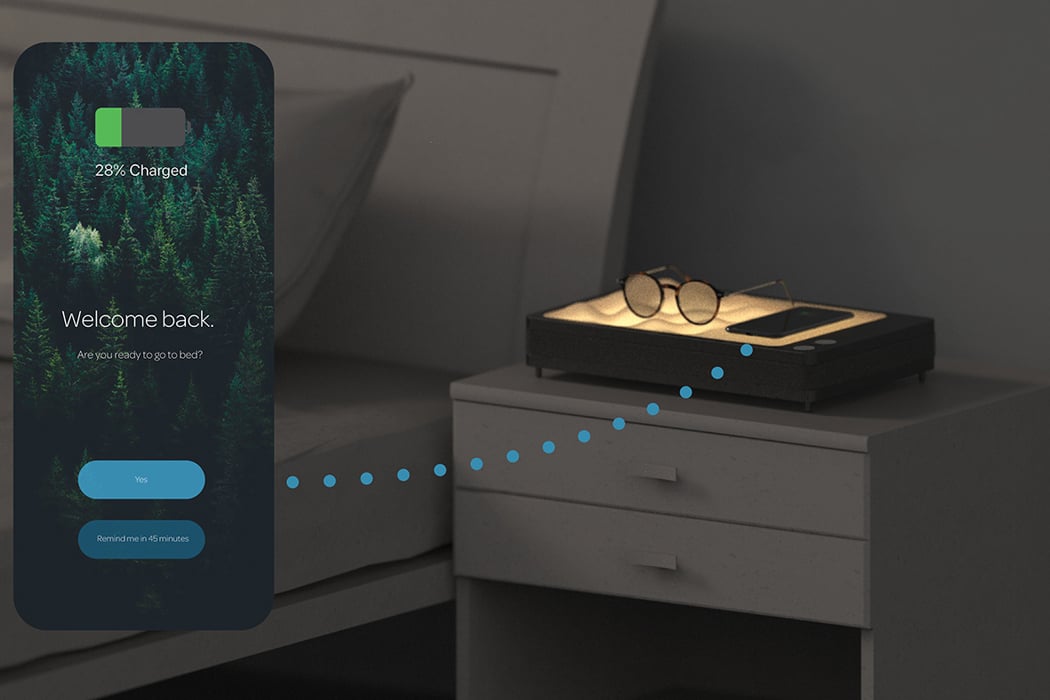

Once Oblak’s user is ready for bed, smart technology adjusts the bedroom’s lighting to provide the ideal environment for a good night’s sleep.

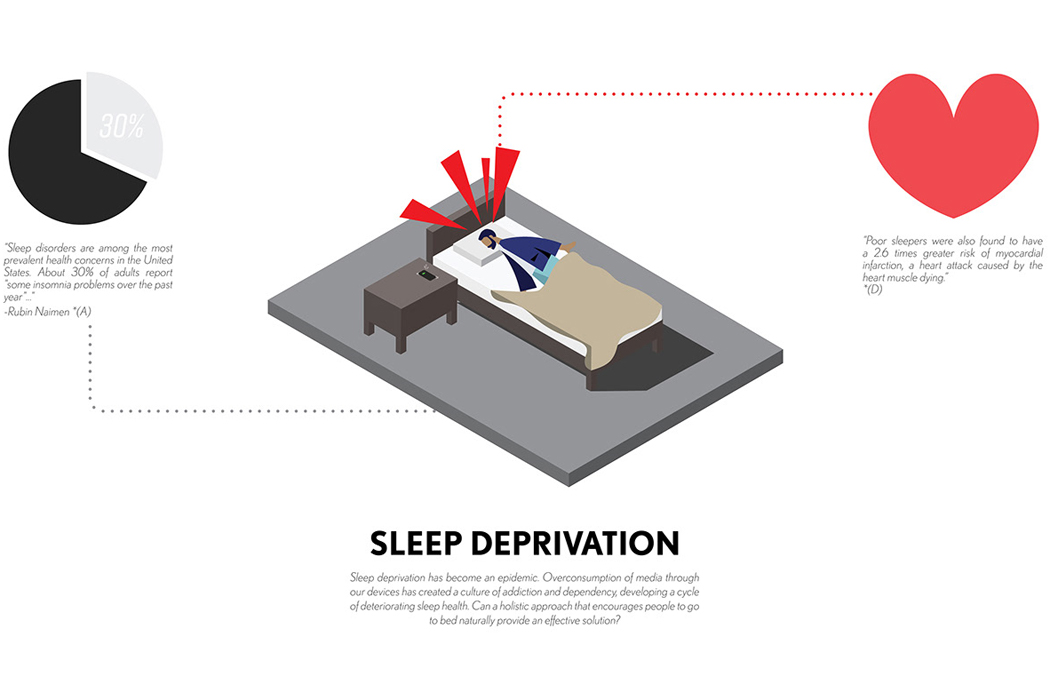
Today’s younger generation spends a lot of time looking at their laptop’s or smartphone’s digital screen, which negatively affects our relationship with sleep.
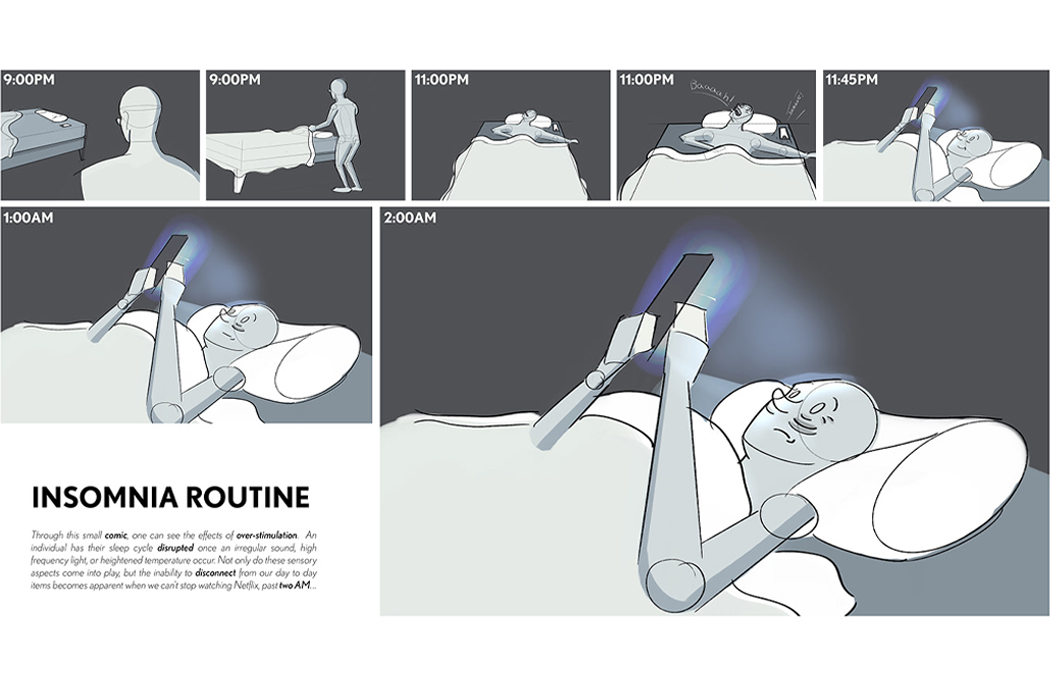
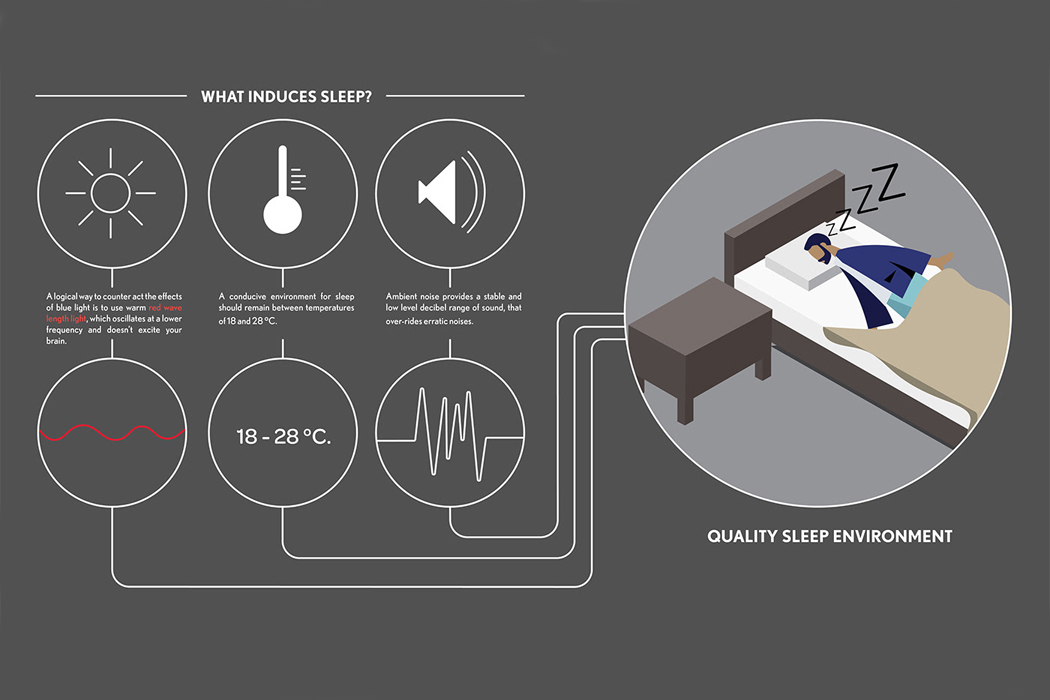
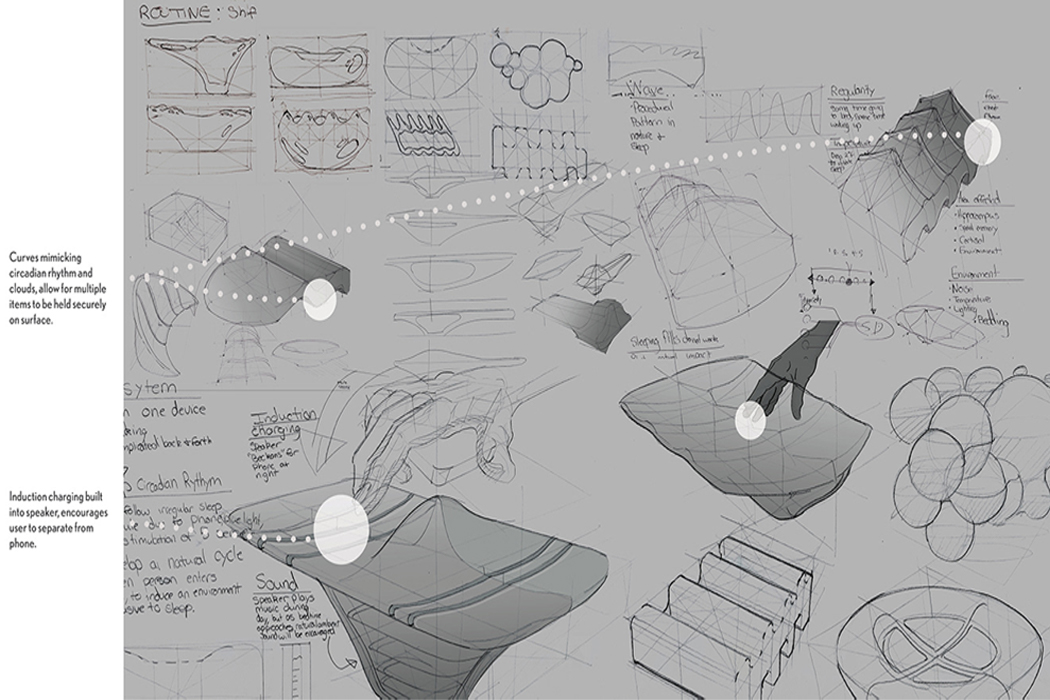
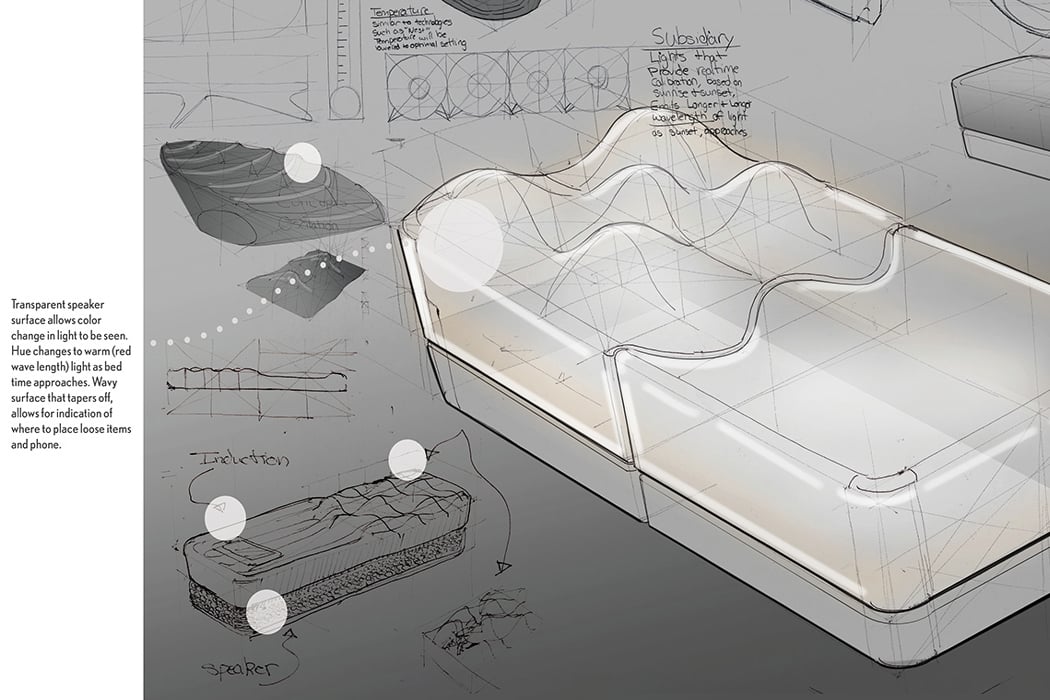
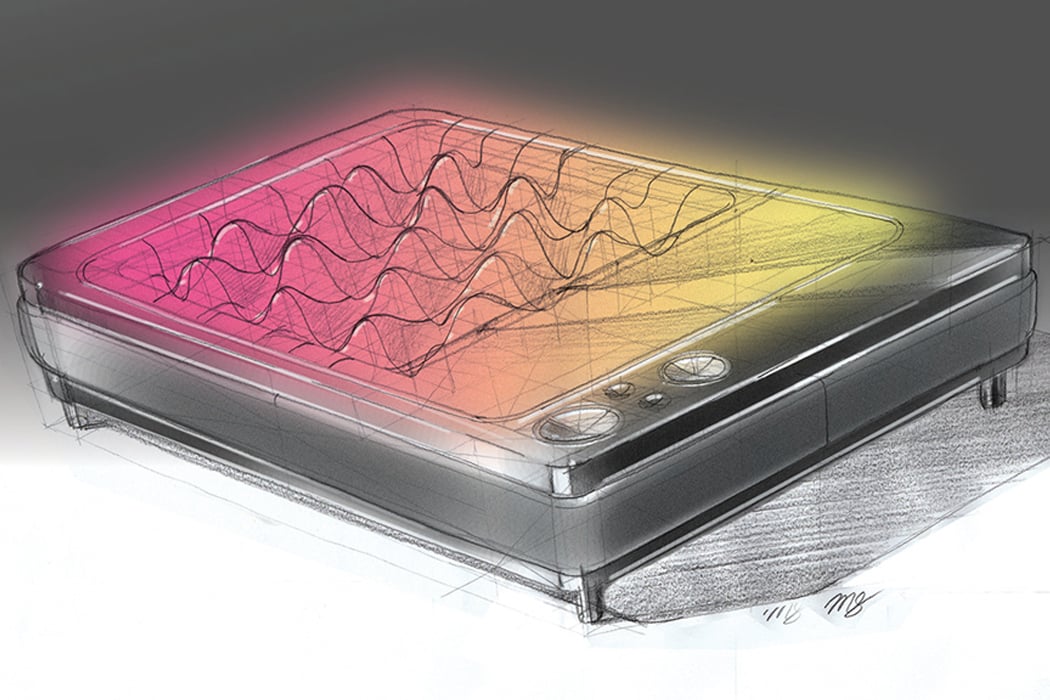
Oblak’s simple interface and textured surface invite users to power on the sleep aid device and securely place their belongings when ready for bed.
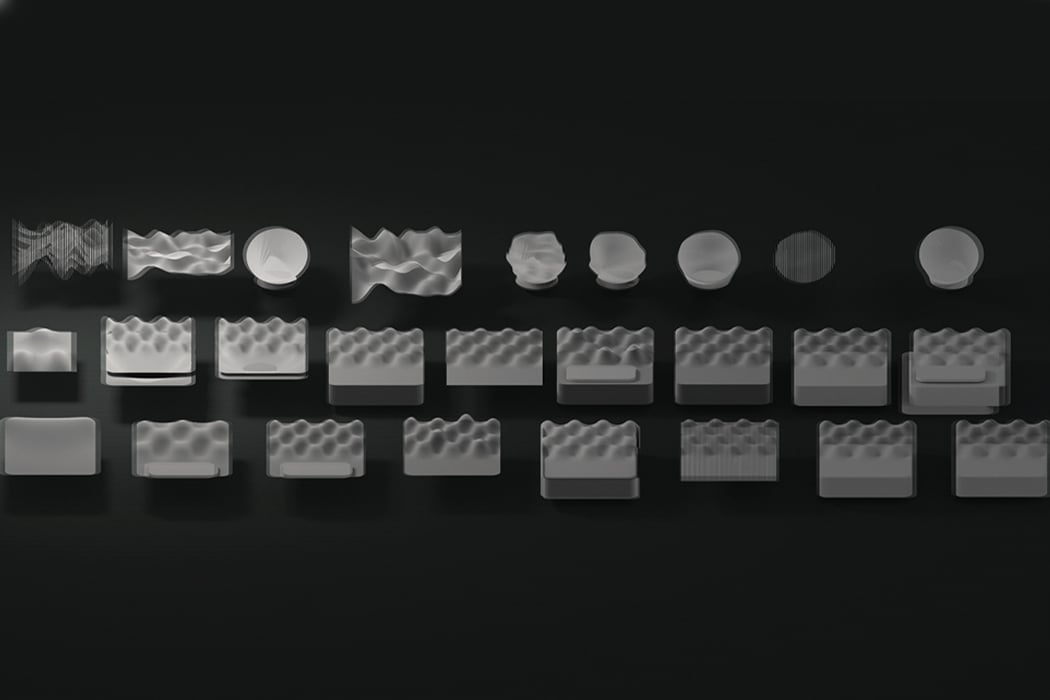
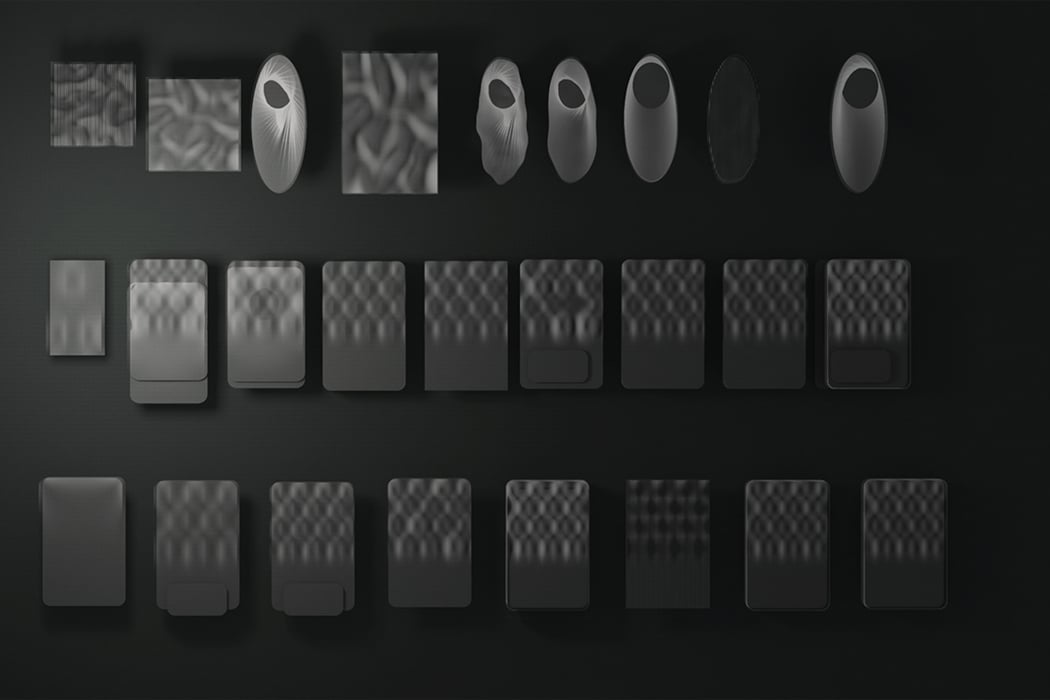
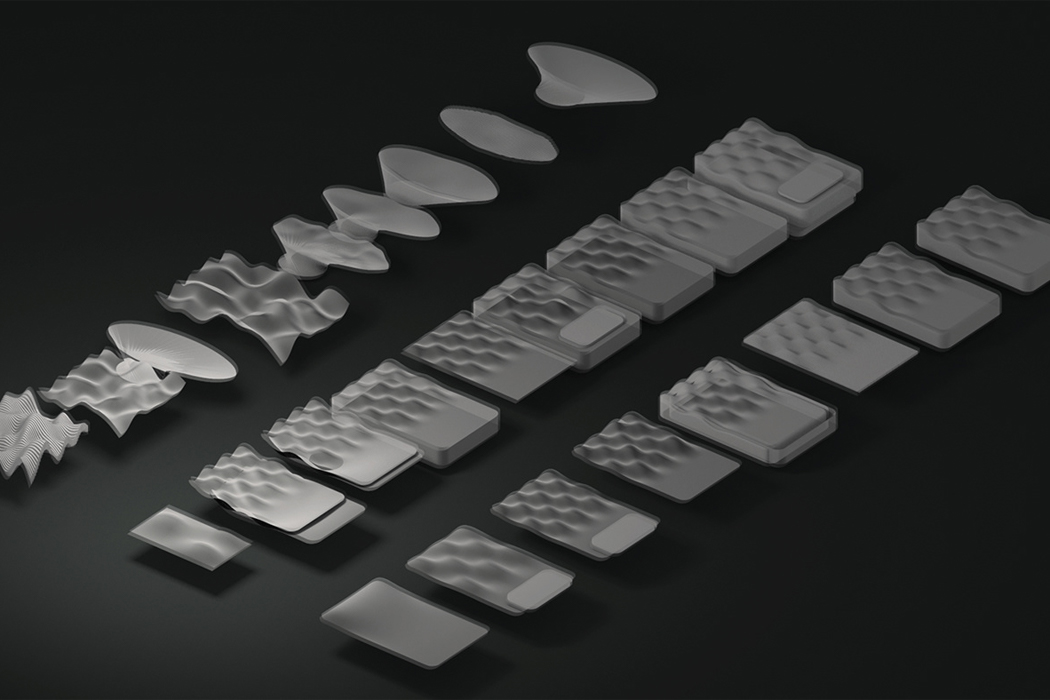
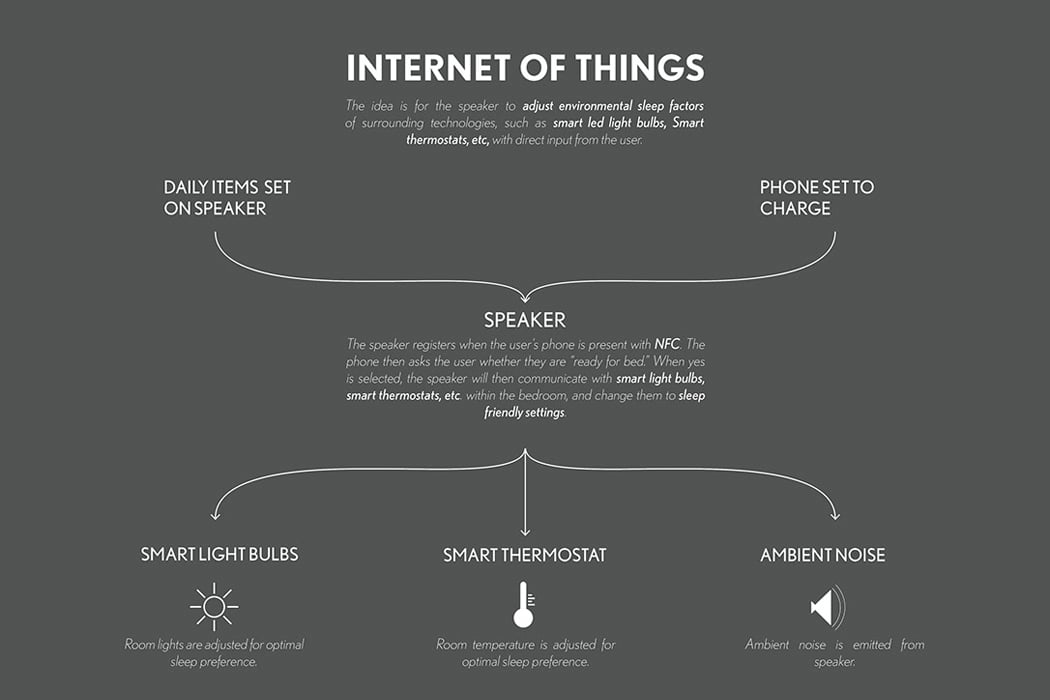
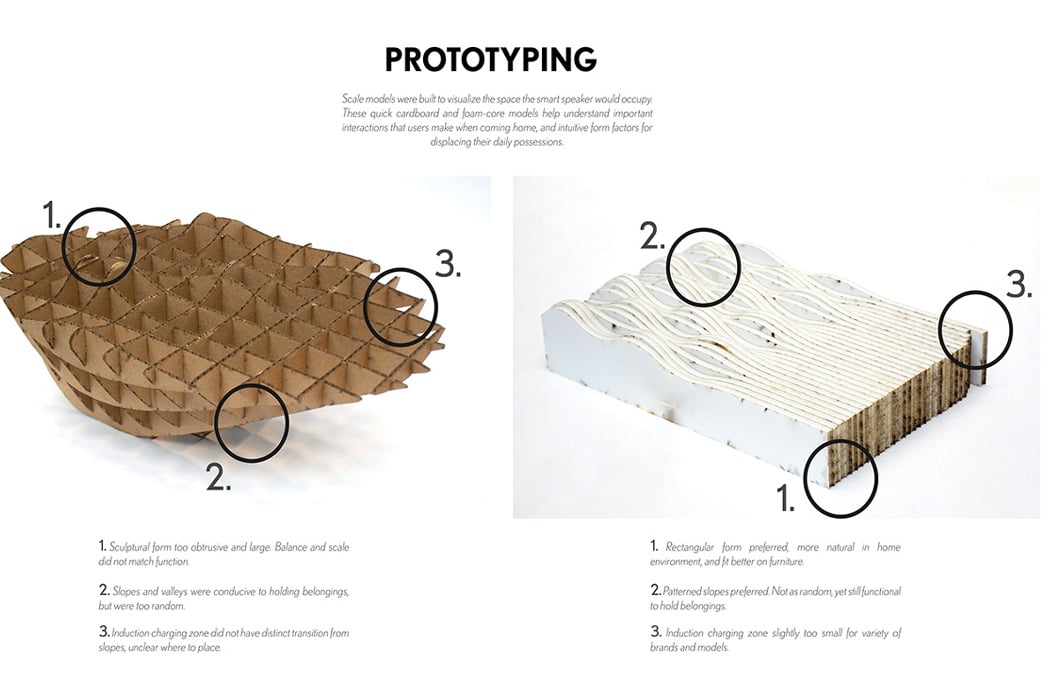
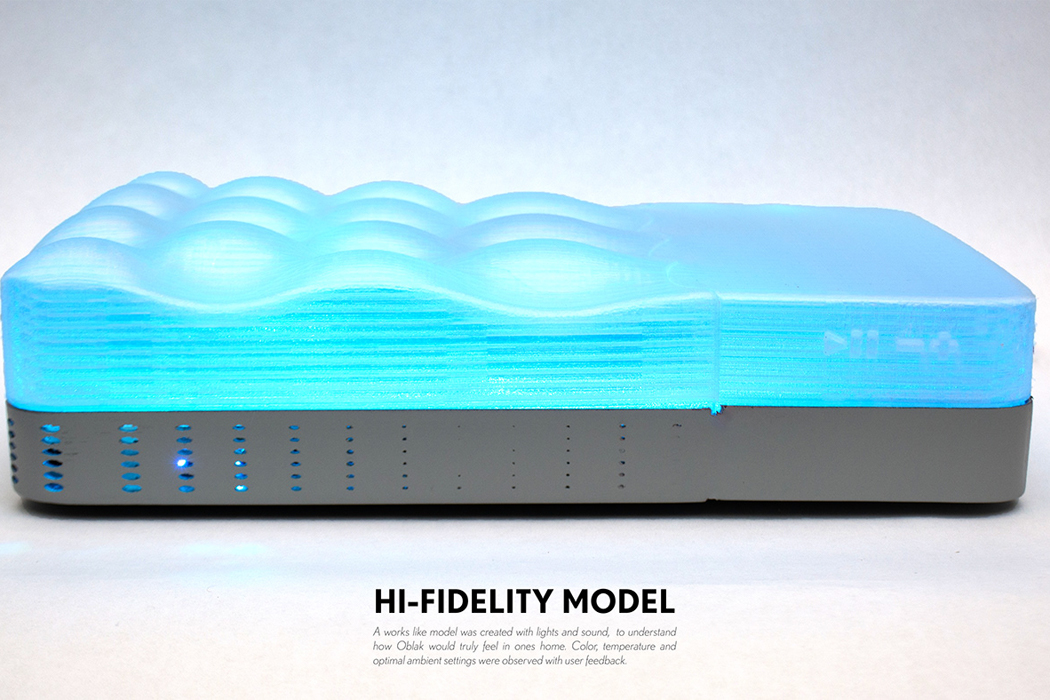
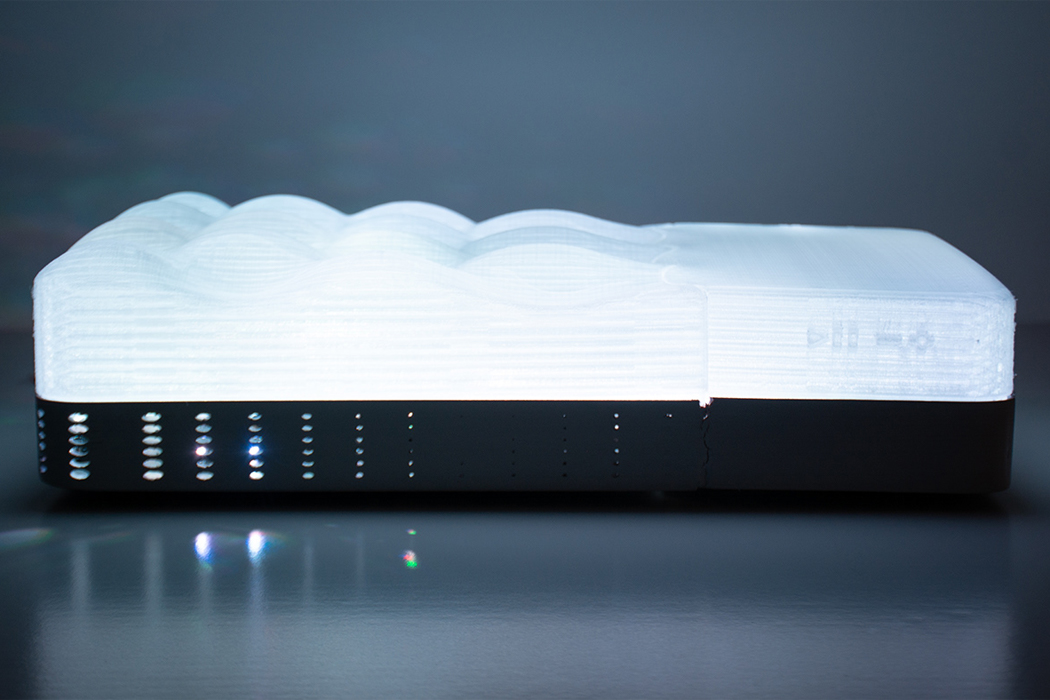
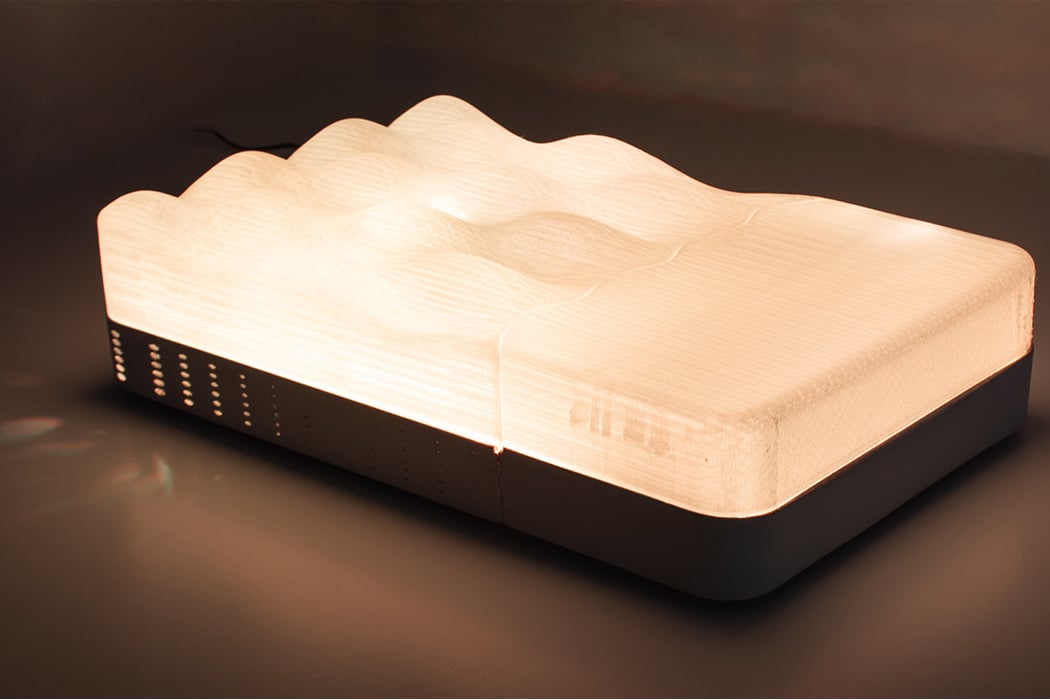
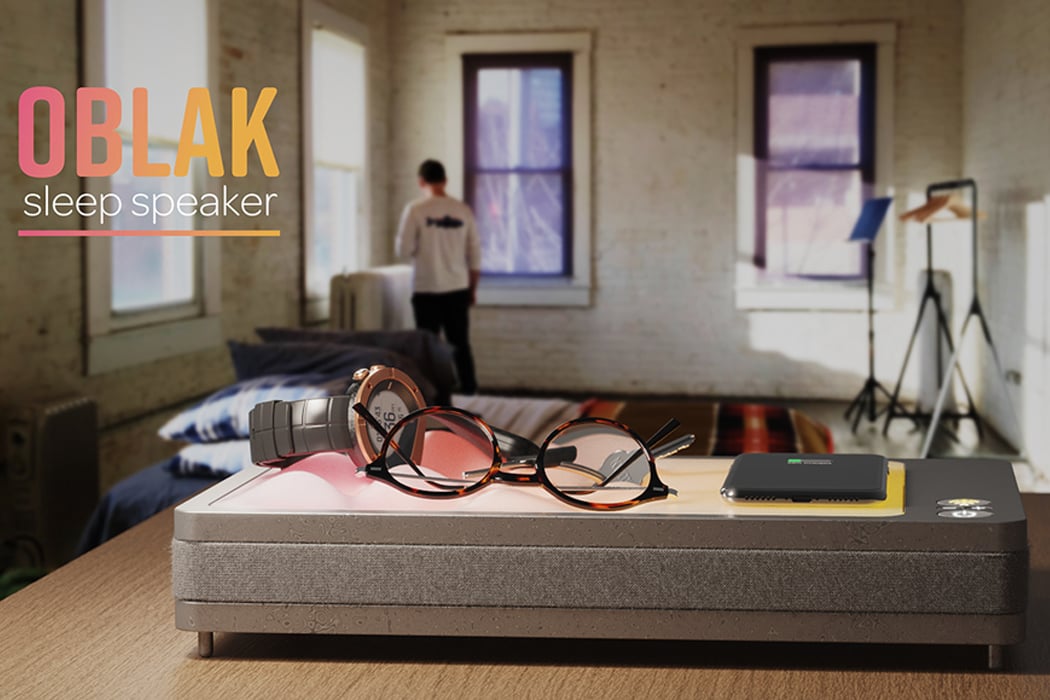
Oblak’s friendly appearance prioritizes the user’s peace of mind by utilizing inviting fabric and layers of translucent surfaces that echo the fogginess that follows a good night’s rest.
